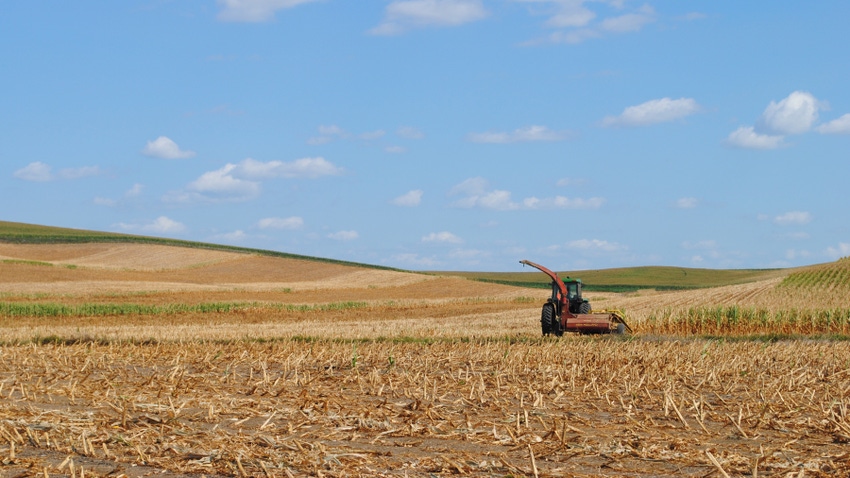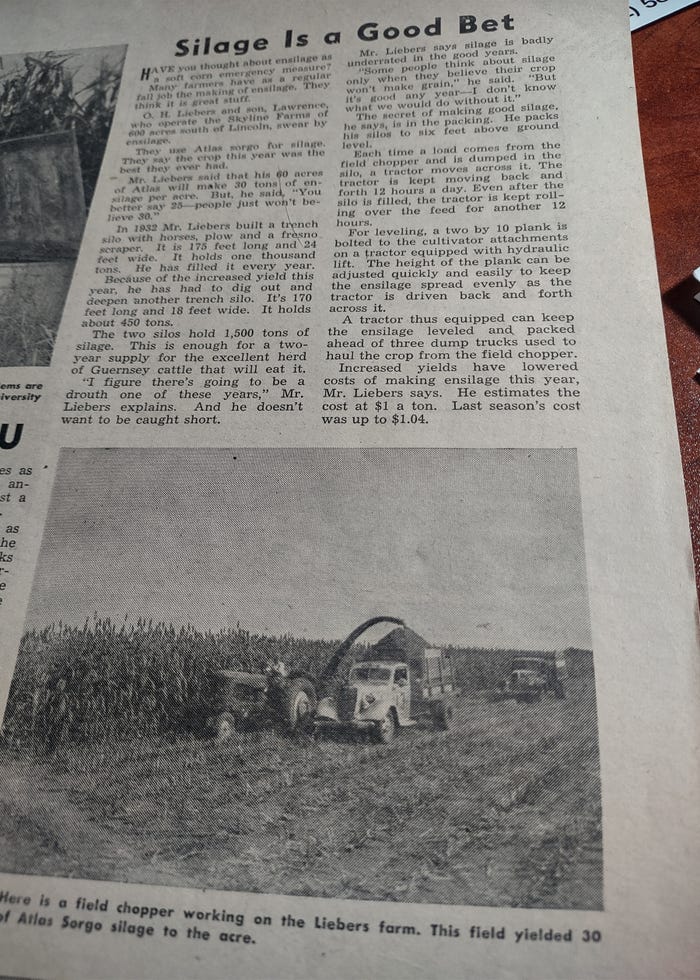
Nebraska is a silage state, ranking high in silage production nationally every year. Farmers put up about 430,000 acres of corn silage; 75,000 acres of sorghum silage; and another 75,000 acres of alfalfa and other hay silage in 2022, according to USDA National Agricultural Statistics Service data.
That amounts to about 5.375 million tons of corn silage and 698,000 tons of sorghum silage, for instance. That’s a lot of silage, but thanks to a thriving livestock industry in the state, it is all used.

LOOKING BACK: This article, “Silage is a good bet,” ran on Page 9 in the Oct. 7, 1950, issue of Nebraska Farmer, talking about the advantages of chopping and storing silage.
Silage production and utilization within the state goes way back, and we found an article on Page 9 of the Oct. 7, 1950, issue of Nebraska Farmer, “Silage is a good bet,” that touts the production of silage on a diversified farm.
The writer of the article visited O.H. Liebers and his son, Lawrence, of Skyline Farms, south of Lincoln. The photos accompanying the story were of Liebers chopping Atlas sorgo silage, and another of him packing the silage in a trench silo with a Farmall tractor.
Plenty of silage
“In 1932, Mr. Liebers built a trench silo with horses, plow and a Fresno scraper. It is 175 feet long and 24 feet wide. It holds 1,000 tons. He has filled it every year,” the article said. “Because of the increased yield this year, he has had to dig out and deepen another trench silo.”
Between the two silos, he had capacity for 1,500 tons of silage, enough for a two-year supply to keep his herd of Guernsey cattle fed.
In the article, Liebers noted, “Some people think about silage only when they believe their crop won’t make grain, but it’s good any year — I don’t know what we would do without it.”
He noted that packing is the key to making good silage, with his packing tractor moving over the silage pile 12 hours a day. For leveling, Liebers bolted a 2-by-10 plank to the cultivator attachment on the tractor, equipped with a hydraulic lift. The height of the plank was adjusted quickly and easily to keep the ensilage spread evenly as the tractor drove back and forth across the pile.
More capacity
Today, silage cutting is a little different than the days of a single-row chopper pulled by a Farmall tractor, for instance. Some of the latest forage harvesters have engines rated up to 900 hp, or even more with huge capacity, no matter which crop is being chopped and processed. Plus, the new machines can fly through the field, compared to the old Farmall.
Modern self-propelled forage harvesters can attain average speeds of 4.5 mph or more through corn, and up to 7.5 mph or more for alfalfa haylage, depending on the production of the crop and the terrain. An example of modern capacity would be a harvester with a 12-row header that could devour up to 400 tons of corn silage per hour at a rate of 7 tons per minute.
Plus, modern harvester manufacturers tout the highest quality of feed moving through the machine, and moving through the field at a fuel-efficient rate, processing more silage through the machine for every gallon of fuel used in the process than ever before.
About the Author(s)
You May Also Like






